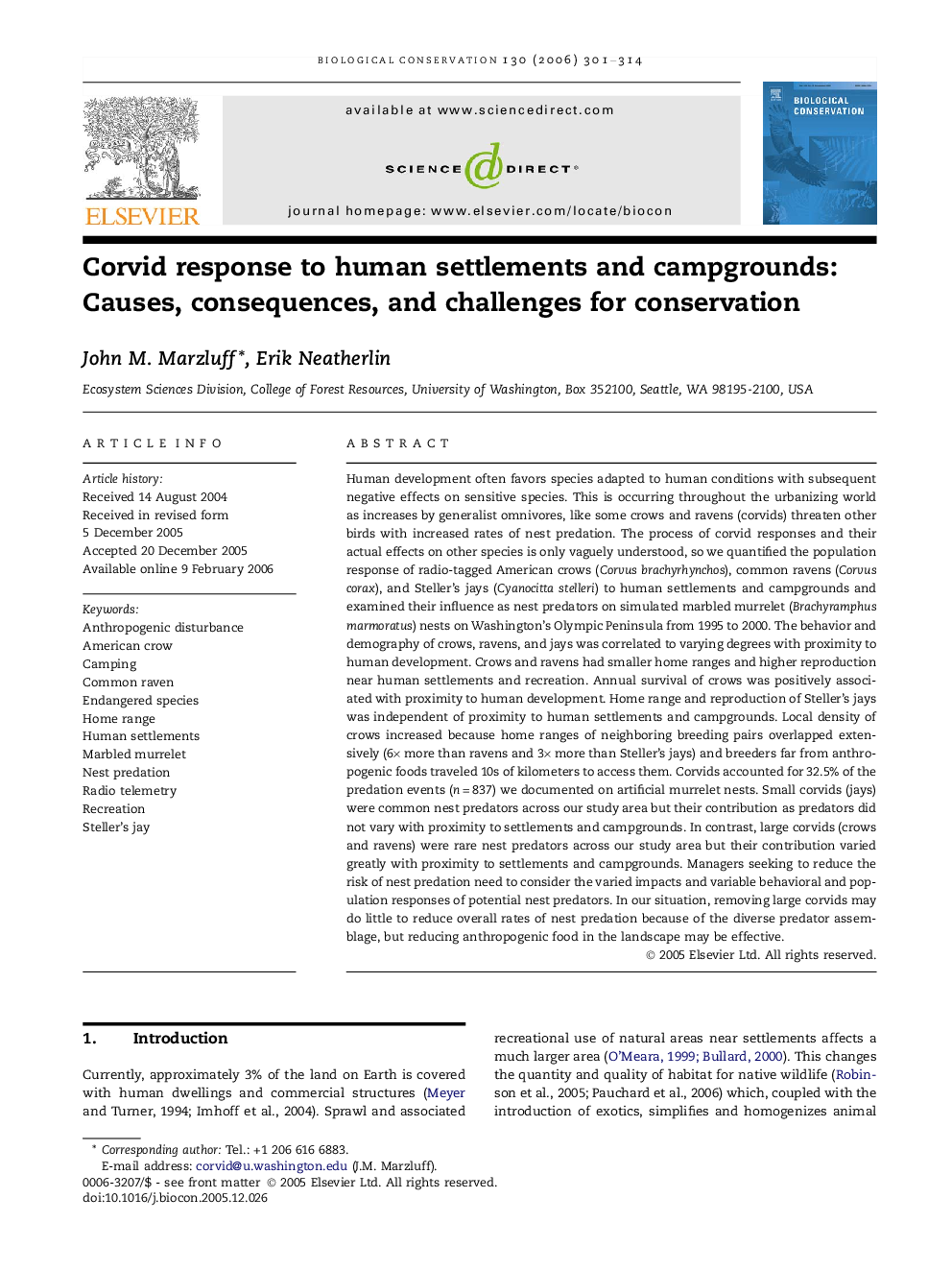| کد مقاله | کد نشریه | سال انتشار | مقاله انگلیسی | نسخه تمام متن |
|---|---|---|---|---|
| 4387676 | 1304619 | 2006 | 14 صفحه PDF | دانلود رایگان |

Human development often favors species adapted to human conditions with subsequent negative effects on sensitive species. This is occurring throughout the urbanizing world as increases by generalist omnivores, like some crows and ravens (corvids) threaten other birds with increased rates of nest predation. The process of corvid responses and their actual effects on other species is only vaguely understood, so we quantified the population response of radio-tagged American crows (Corvus brachyrhynchos), common ravens (Corvus corax), and Steller’s jays (Cyanocitta stelleri) to human settlements and campgrounds and examined their influence as nest predators on simulated marbled murrelet (Brachyramphus marmoratus) nests on Washington’s Olympic Peninsula from 1995 to 2000. The behavior and demography of crows, ravens, and jays was correlated to varying degrees with proximity to human development. Crows and ravens had smaller home ranges and higher reproduction near human settlements and recreation. Annual survival of crows was positively associated with proximity to human development. Home range and reproduction of Steller’s jays was independent of proximity to human settlements and campgrounds. Local density of crows increased because home ranges of neighboring breeding pairs overlapped extensively (6× more than ravens and 3× more than Steller’s jays) and breeders far from anthropogenic foods traveled 10s of kilometers to access them. Corvids accounted for 32.5% of the predation events (n = 837) we documented on artificial murrelet nests. Small corvids (jays) were common nest predators across our study area but their contribution as predators did not vary with proximity to settlements and campgrounds. In contrast, large corvids (crows and ravens) were rare nest predators across our study area but their contribution varied greatly with proximity to settlements and campgrounds. Managers seeking to reduce the risk of nest predation need to consider the varied impacts and variable behavioral and population responses of potential nest predators. In our situation, removing large corvids may do little to reduce overall rates of nest predation because of the diverse predator assemblage, but reducing anthropogenic food in the landscape may be effective.
Journal: Biological Conservation - Volume 130, Issue 2, June 2006, Pages 301–314